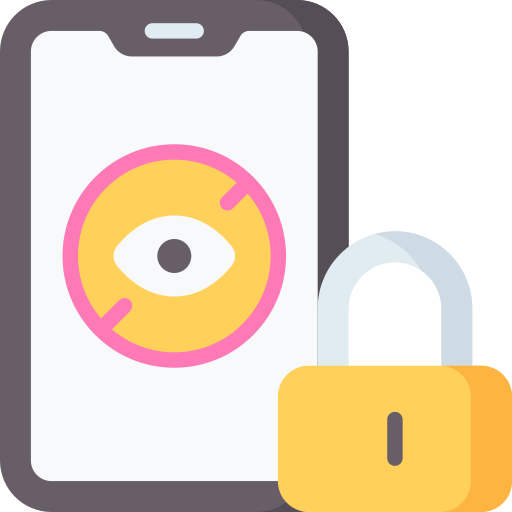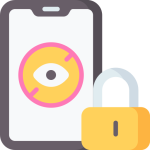Understanding the Need for Digital Parental Control
With the advancement of technology and the widespread use of the internet, digital parental control has become more important than ever. Children today have easy access to a vast amount of information and online content, which can be both beneficial and harmful. Parents need to understand the need for digital parental control to ensure their children’s safety and well-being in the digital world.
One of the main reasons why digital parental control is essential is to protect children from the various risks and dangers they face online. The internet is not only a source of information but also a platform where cyberbullying, online predators, and inappropriate content exist. Without proper supervision, children can inadvertently stumble upon explicit material or be exposed to individuals with malicious intent. Digital parental control allows parents to monitor their children’s online activities, filter out harmful content, and ensure their online interactions are safe and secure.
Risks and Dangers Children Face Online
Children today face a myriad of risks and dangers when they venture online. One of the most prevalent threats is cyberbullying, which can have a profound impact on a child’s mental and emotional well-being. With the rise of social media and instant messaging platforms, bullies can easily target their victims, leaving them feeling isolated and vulnerable.
In addition to cyberbullying, there is also the risk of online predators. These individuals may use various tactics to trick children into sharing personal information or meeting in person. The anonymity provided by the internet makes it easier for predators to hide their true identities and intentions, making it essential for parents to monitor their children’s online activities to protect them from potential harm.
The Role of Parental Involvement in Online Safety
Parents play a crucial role in ensuring their child’s online safety. It is not enough to merely set up monitoring software; parents must actively engage and participate in their child’s online activities. By being involved, parents can stay aware of potential risks, monitor the content their child is exposed to, and guide them towards making responsible choices online.
Firstly, parents should establish open lines of communication with their child, encouraging them to discuss any online experiences or concerns they may have. This creates a safe and trusting environment where children feel comfortable reaching out for help or advice. Regular conversations about internet safety can help parents understand their child’s online behavior and give them an opportunity to provide guidance on appropriate online conduct.
Secondly, setting clear boundaries is essential. Parents should establish rules regarding online access, screen time limits, and appropriate websites or platforms. By setting expectations, parents can help their child develop positive digital habits, such as adhering to a curfew, avoiding sharing personal information, or avoiding engaging with strangers online. Moreover, enforcing these boundaries helps ensure the child’s safety and protects them from potentially dangerous situations.
In conclusion, parental involvement in online safety is crucial for protecting children in today’s digital age. By actively participating in their child’s online activities, establishing open communication, and setting clear boundaries, parents can help their child navigate the internet responsibly and safeguard them from potential risks and dangers.
Exploring Features and Benefits of Monitoring Tools
Monitoring tools are designed to facilitate the process of keeping an eye on children’s online activities. They come equipped with various features that allow parents to gain insights into what their children are doing online. One such feature is real-time monitoring, which enables parents to view their child’s online activities as they happen. This can be particularly useful for identifying any potentially harmful behaviors or interactions in real-time.
In addition to real-time monitoring, many monitoring tools offer the ability to track and log a child’s online history. This can be helpful for parents who want to review their child’s browsing habits and ensure they are not accessing inappropriate content. Furthermore, some monitoring tools also provide the option to set up alerts and notifications. These alerts can be configured to notify parents when certain keywords or phrases are detected in their child’s online conversations, helping to identify potential risks or dangers. Overall, the features offered by monitoring tools provide parents with a greater sense of control and understanding when it comes to their child’s online activities.
Setting Up and Installing Monitoring Software
One of the essential steps in ensuring the online safety of children is setting up and installing monitoring software. This software plays a crucial role in providing parents with the necessary tools to keep a watchful eye on their children’s online activities.
To get started, parents should first research and select a reliable monitoring software that aligns with their specific needs and requirements. Once the software is chosen, the next step is to download and install it on the device that the child uses to access the internet. This could be a computer, smartphone, or tablet. The installation process may vary depending on the selected software, but generally, it involves following a set of straightforward instructions provided by the software provider.
How Monitoring Software Helps Protect Children’s Privacy
Monitoring software plays a crucial role in safeguarding children’s privacy in today’s digital age. By allowing parents to track their online activities, it enables them to identify and prevent potential risks and threats. With the ability to monitor messages, social media profiles, and browsing history, parents can gain an insight into their children’s online behavior and take necessary steps to protect their privacy.
One of the key ways in which monitoring software helps protect children’s privacy is by identifying any inappropriate or harmful content they may come across. By analyzing the websites visited, the software can detect any potential danger zones and alert parents to take action. Additionally, monitoring tools allow parents to set up filters and blocks to prevent access to harmful content, thereby ensuring a safe and protected online environment for children.
Balancing Trust and Monitoring: Establishing Healthy Boundaries
Creating a balance between trust and monitoring is crucial when it comes to establishing healthy boundaries for online safety. As a parent, it is important to trust your child and allow them some independence while still ensuring their protection. By monitoring their online activities, you can have peace of mind knowing that you are actively involved in their digital lives.
Establishing healthy boundaries involves open communication and setting clear expectations with your child. Let them know that while you trust them, it is your responsibility to ensure their safety online. This may involve setting time limits on device usage, discussing appropriate online behavior, and regularly checking in on their online activities. By finding this balance between trust and monitoring, you can create a safe and supportive online environment for your child.
Monitoring Social Media and Messaging Apps
Monitoring social media and messaging apps is crucial for parents who want to ensure their children’s online safety. With the rise in popularity of platforms like Facebook, Instagram, Snapchat, and WhatsApp, it is essential for parents to stay informed and vigilant about their children’s online activities.
Social media platforms provide children with opportunities to connect with friends, share information, and engage in various online activities. However, these platforms also carry potential risks, such as cyberbullying, exposure to inappropriate content, and interactions with strangers. By monitoring their children’s social media and messaging app usage, parents can become aware of any potential threats and take immediate action to protect their children from harm.
Monitoring software allows parents to keep track of their children’s social media and messaging app activities, including the messages they send and receive, the friends they interact with, and the content they are exposed to. By having this information at their fingertips, parents can gain insights into their children’s online behavior and identify any red flags that may indicate potential dangers. Additionally, monitoring software can help parents initiate conversations with their children about responsible social media use and educate them about the potential risks they may encounter online.
Filtering and Blocking Inappropriate Content
Parents have a crucial role in ensuring their children’s online safety by filtering and blocking inappropriate content. The vast amount of information available on the internet makes it necessary for parents to take preventive measures to protect their children from stumbling upon explicit or harmful content. Filtering software allows parents to customize content access, block certain websites or categories, and ensure that their children are only exposed to age-appropriate materials. By setting up these filters, parents can create a safer and more controlled online environment for their children.
In addition to filtering websites, parents can also utilize blocking features to restrict access to certain types of content. These features enable parents to choose specific keywords or phrases that, if detected, will block access to the associated content. By blocking inappropriate content, parents can prevent their children from encountering harmful or explicit images, videos, or articles that may negatively impact their well-being. With these tools, parents can take an active role in protecting their children from potentially harmful or inappropriate online material.
Nurturing Open Communication and Education about Online Safety
Nurturing open communication and education about online safety is essential for parents who want to protect their children in the digital age. By fostering an environment of trust and understanding, parents can create a safe space where their children feel comfortable discussing their online experiences and concerns. It is important for parents to approach this topic with sensitivity and empathy, ensuring that their children know they can openly communicate any issues they may encounter online.
Education is also a crucial aspect of nurturing open communication about online safety. Parents should actively involve themselves in teaching their children about the potential risks and dangers of the internet, as well as providing guidance on how to navigate the online world responsibly. This can include discussions about the importance of privacy settings, the consequences of sharing personal information online, and the dangers of interacting with strangers. By equipping children with the knowledge and skills they need to stay safe, parents can empower them to make informed decisions and protect themselves while using the internet.
What is digital parental control and why is it important?
Digital parental control refers to the use of monitoring tools and software to ensure the online safety of children. It is important because it helps parents protect their children from potential risks and dangers they may encounter online.
What are some risks and dangers children face online?
Children face risks such as cyberbullying, online predators, exposure to inappropriate content, and identity theft while being online.
How can parental involvement help in ensuring online safety?
Parents play a crucial role in online safety by actively monitoring their children’s online activities, setting boundaries, and educating them about safe online behavior.
What are some features and benefits of monitoring tools?
Monitoring tools provide features like real-time activity tracking, website blocking, social media monitoring, and app usage control. They help parents stay informed about their child’s online activities and protect them from potential harm.
How can one set up and install monitoring software?
Setting up and installing monitoring software usually involves downloading the software, following the installation instructions, and configuring the settings according to the specific needs and devices of the child.
How does monitoring software protect children’s privacy?
Monitoring software is designed to prioritize the safety and privacy of children. It allows parents to monitor their activities without accessing their personal information or private conversations.
How can parents establish healthy boundaries while using monitoring tools?
Parents should balance trust and monitoring by openly communicating with their children about the use of monitoring tools and setting clear expectations and boundaries for online behavior.
How can parents monitor social media and messaging apps?
Monitoring software often includes features that allow parents to track their child’s social media activity, view messages, and monitor contacts. This helps parents identify any potential risks or inappropriate behavior.
How can parents filter and block inappropriate content?
Monitoring software often offers content filtering and blocking options that allow parents to restrict access to inappropriate websites, apps, or content based on predefined categories or manually specified URLs.
How can parents nurture open communication and educate their children about online safety?
Parents should create a safe and open environment where children feel comfortable discussing their online experiences and concerns. Regular conversations about online safety, setting rules, and educating children about potential risks are essential for their digital well-being.




